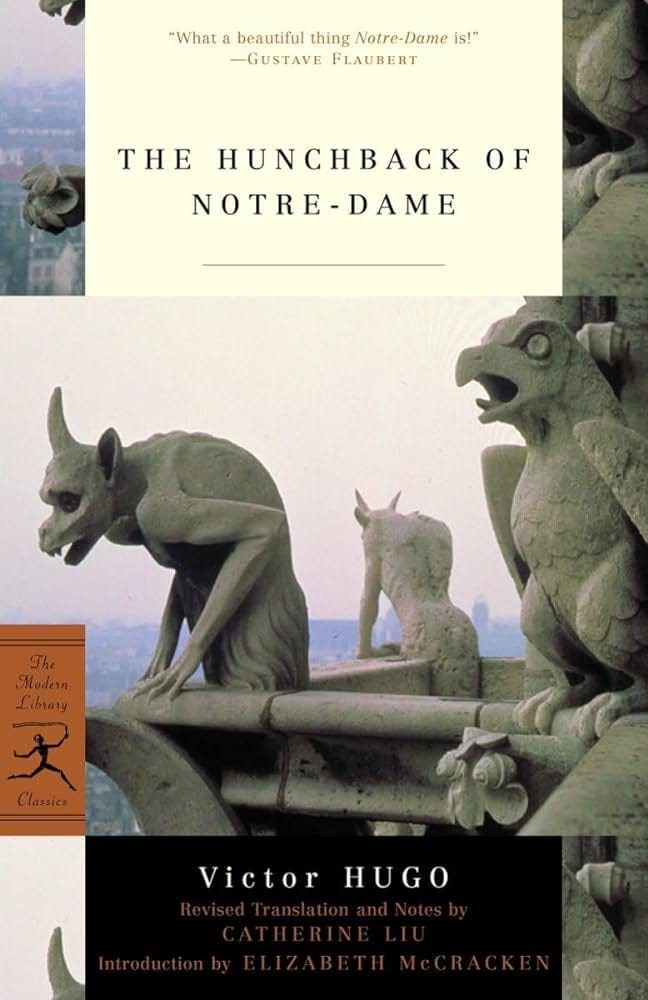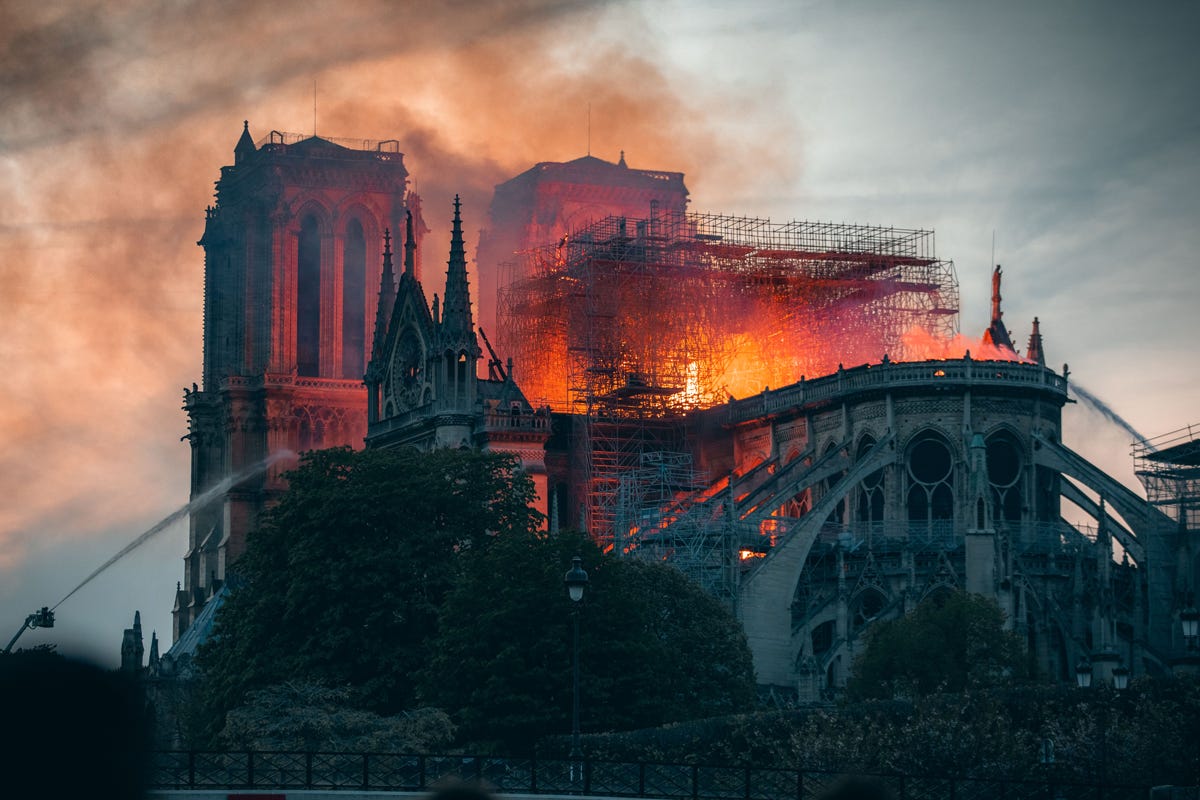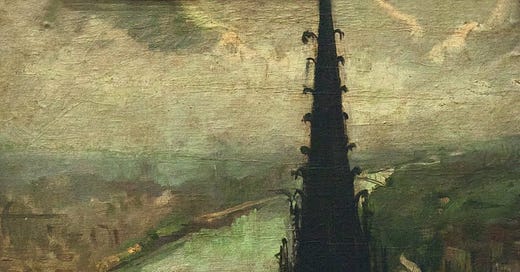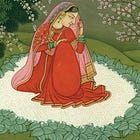The Hunchback of Notre Dame: An Urban Gothic Masterpiece
In which I try to convince you to read this classic, and share some history
In our most recent episode of The Novel Tea, we talked about The Shadow of the Wind by Carlos Ruis Zafon. There were things we really enjoyed about the book, and things we didn’t like so much (you can find the full discussion here).
While I appreciated the gothic elements and architectural descriptions of Barcelona, I wasn’t quite sure how it impacted the story, or how the characters were affected by the atmosphere. It left a large gothic hole in my heart that needed to be filled.
I searched far and wide for a novel that might satisfy me — I didn’t want a crumbling mansion in the countryside this time (though I usually love the isolated gothic setting), I wanted a vibrant city.
And the answer came to me: The Hunchback of Notre Dame — possibly the original urban gothic novel.1 I will skip over a summary here because I assume most readers are familiar with the lore surrounding the novel, either from the Disney adaptation, or other film and theater versions (though I will emphasize that the book is vastly different in so many ways).
Read on comfortably; this essay contains no spoilers or excessive plot descriptions.

I will start with a confession: I wasn’t sure, for a lot of the time that I was reading the book, whether it would be worth my time. Often, I was confused — who were these characters, and why did they matter? Why was this person arrested, again? When did that one decide to join the festival of fools?
But slowly, the novel grew on me. The more I read, the deeper I traversed into the dark alleys, deep caverns, and crumbling architectural wonders of 14th century Paris. I met thieves, gypsies, fools, beggars, prisoners, and cripples — the novel doesn’t shy away from using such straightforward monikers, and while we wouldn’t use this term today, given modern sensibilities, I can also respect the book’s honesty as it highlights those who often live on the edges of society.
Characters’ physical descriptions, particularly of those who are different, are crucial to the story — in true Gothic fashion, Hugo wrestles with contrasting ideas of beauty and fear, love and villainy, monstrosity and bravery.
In today’s world, we are constantly conscious of appearances, and make every effort to dismiss its importance. Actors used to be criticized getting plastic surgery; now they are celebrated for the same, yet it is also considered gauche to call attention to cosmetic work. There is a dense cloud of societal expectations, with rules and regulations and sensitivities to maneuver, when it comes to the idea of beauty.
But Hugo does not pass judgment based on appearances (though his characters, and 14th century Paris certainly do) — he is most interested in appearances for their own sake. He is struck by the physicality of the people who populate the city, as much as he is in awe of the buildings and ancient constructions. As we get to know the characters, we see how they come to represent the city itself:
He was a cripple too — a one-armed lame man who had to use such a complicated system of crutches and wooden legs that he looked like a walking scaffold.
The most important ‘cripple’ in this book is, of course, Quasimodo. Left behind in the Notre Dame as an infant, he is granted sanctuary in this great cathedral, and taken in by Claude Frollo, the Archdaecon. The name Quasimodo means half-formed, and his physicality defines him, just as the physicality of the buildings around him define the city. His daily job of ringing the bells has saddled him with one more reason for the townspeople to mock him: he can no longer hear. But this doesn’t dampen his affection for the bells, and the church; in fact, his love for the Notre Dame only grows the longer he lives in its walls.
While Quasimodo may have captured the imaginations of readers for centuries, he is not the only character in the book, nor is he the most important one. We also meet Jehan, Claude Frollo’s dilettante brother; Esmerelda, the gypsy dancer; Djali, her adorable goat; Pierre Gringoire, a struggling playwright; Phoebus, a captain and scoundrel; Paquette, a miserable recluse; and so many more. Through these characters, we see heartbreak, destruction, love and loss, politics, faith, and humanity.
In fact, one of the greatest tragedies, in my eyes, is the mistranslation of its title to The Hunchback of Notre Dame. This change, which Hugo himself was unhappy with, was made by the original translator, Frederic Shoberl (possibly to cater to conventions that readers in England would be more familiar with) — and nobody ever changed it back.
The original title, Notre Dame de Paris, refers, of course, to the great cathedral, and directly translates to Our Lady of Paris. It is a shame, as the book is really a tribute to the cathedral itself, weaving a captivating tale of many characters whose lives revolve around this great work of architecture.
Ultimately, the Notre Dame is a sanctuary — a refuge for those maligned individuals who have nowhere else to turn. Here, you cannot be touched by politics, power, or even religious persecution. This status, combined with the beauty of its construction and artwork, elevates the Notre Dame to a plane even higher than spiritual — almost supernatural.
In one of my favorite chapters in the book, “This Will Kill That” which reads more like an anthropological or historical essay than a chapter that fits neatly within the pages of a storybook, Hugo writes of architecture as literature. He asserts that for centuries, buildings were the great vessels of knowledge:
So, during the world’s first six thousand years, from the first immemorial pagoda of Hindustan to the Cathedral of Cologne, architecture has been the great writing of the human species. And so true is this that not only every religious symbol but every human thought has its page in the immense book and its monument.
With the invention and distribution of the printing press, and as literacy became more widespread, he argues that books became the primary medium of passing on knowledge, and thus “sweeping lines of art were replaced by geometry’s cold, inexorable ones.”
As time passed, constructions began to crumble, and the Notre Dame was subject to countless manmade and natural causes of destruction. During the French Revolution, the cathedral came to symbolize the monarchy and the Catholic state, and as a result, was repeatedly pillaged and attacked. The large statues that frame the three entrance doors were destroyed; the ones we see today are carefully constructed replicas.
By the 19th century, old gothic buildings had fallen into complete disrepair, and it became a very real possibility that they would be razed in favor of newer constructions. Victor Hugo knew that there was something fundamentally different about this historical architecture that was worth saving. He was one of the few to speak out in an effort to save the cathedral:
All manner of profanation, degradation, and ruin are all at once threatening what little remains of these admirable monuments of the Middle Ages that bear the imprint of past national glory, to which both the memory of kings and the tradition of the people are attached.
But he also recognized that this wouldn’t be enough; he had a greater weapon in his arsenal than impassioned editorials.
Hugo recognized the power of stories.
And so he penned one of the great novels of the 19th century, reigniting conservation efforts, fueling tourism to Paris, and crafting a new style of novel: the urban gothic. For it was a detail within the cathedral itself that inspired him to write the book, which starts with:
A few years ago, while visiting, or rather exploring, Notre-Dame, the author of this book found, in an obscure corner of one of the towers, this word carved upon the wall:
ἈΝÁΓΚΗ
These Greek characters, black with age, and cut deep into the stone with the peculiarities of form and arrangement common to Gothic calligraphy that marked them the work of some hand in the Middle Ages, and above all the sad and mournful meaning which they expressed, forcibly impressed the author.
These characters spell the Greek word for ‘fate’ — a fitting way to start the story once you know how it ends; but I also think of fate in a different way. It is fate the way that human lives are intertwined with their environments, the way books and buildings interact, and the way our lives are impacted by art and architecture.
After the devastating fire in 2019, book sales for Notre Dame de Paris spiked, both in France and internationally, mirroring the original interest in gothic architecture that inspired the book. Literature saved the cathedral two hundred years ago, and now, love for architecture is saving a book.

In the days after I finished the book, while riding the subway, I found myself looking at people differently — the jutting of a chin, the sagging skin of a cheek all suddenly seemed so prominent, and I was struck by the physicality of each person. I noticed the way a pregnant woman’s belly swelled, and the way an old man’s bony knees stuck out at odd angles. These were no longer just faces and bodies — what I was seeing was architecture.
Through his words, Hugo does something beautiful with appearances, and physicality, and ugliness, and violence, and love. The story of The Hunchback of Notre Dame, and the lore that surrounds it, makes me feel a deep sense of awe; that words can be so powerful in uniting hearts and changing the real world around us is one of the most inspiring and touching things to experience.
— Shruti
Is this an actual genre, or have I made it up? I would love to get more recommendations on this genre! Most books I see veer into horror or fantasy - but I would like a strictly gothic city tale.







